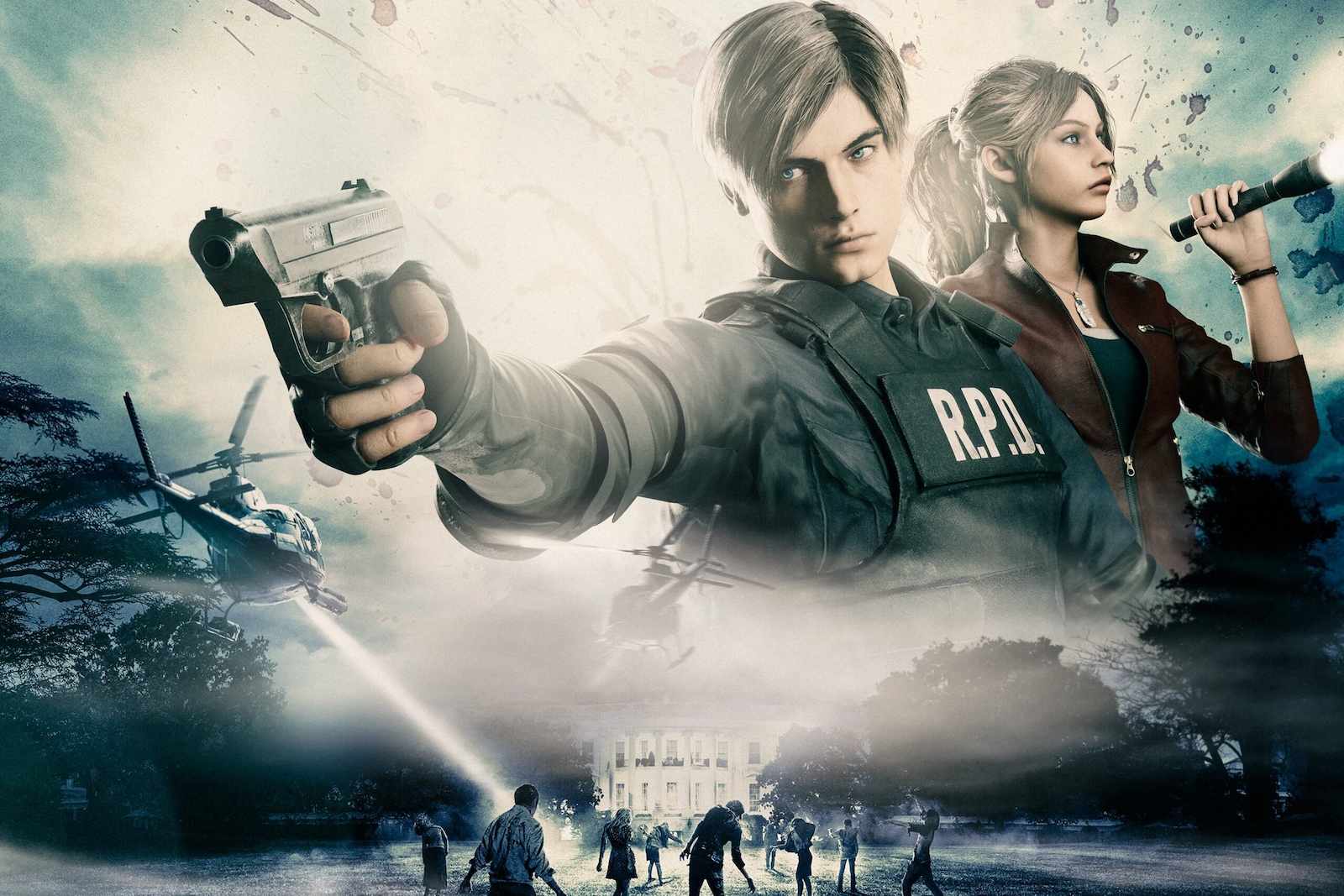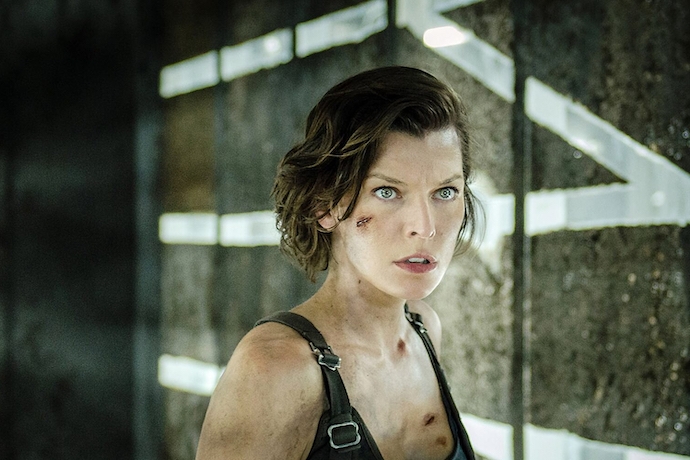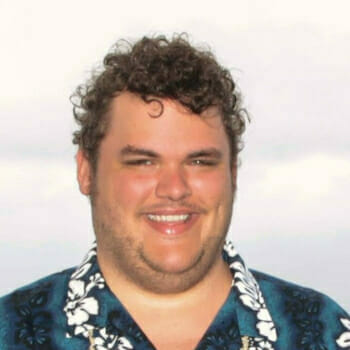
As ‘Resident Evil’ Turns 25, Capcom, Netflix and Hollywood are All Betting Big on the Franchise’s Future
In the mid-90s, the video game world seemed dominated by the likes of kid-friendly characters, including Nintendo’s Mario and Sega’s Sonic the Hedgehog. But soon, new characters and ideas would emerge on the scene. One of the more notable from that era was explorer and action heroine Lara Croft, who would make her debut in the first Tomb Raider game released in October 1996.
But an even more seismic shift happened when, that March, Japanese video game maker Capcom released a unique “survival horror” game set in an abandoned mansion called Resident Evil. First released for the PlayStation, the game follows Special Tactics And Rescue Service (S.T.A.R.S.) recruits Chris Redfield or Jill Valentine, depending on who you choose to play as, as they navigate the terrifying Spencer Mansion riddled with zombies and beasts created by the evil Umbrella Corporation. But this is merely the first adventure, with untold shoot-outs and scares yet to come.
Now that it’s the 25th anniversary of the franchise, Resident Evil is perhaps as big, if not bigger, than it ever has been. And as a huge fan of the video game series, I could not possibly be more ecstatic! A new live-action reboot movie, entitled Resident Evil: Welcome to Raccoon City, is set to debut this winter, and promises to be a closer adaptation of the actual plotline of the games than the hokey Milla Jovovich-starring six-part live-action movie series that ran from 2002 to 2016. Meanwhile, Capcom has turned around the video game series to the point where it is receiving attention and accolades after a years-long creative slump. And even Netflix has seemingly entered the zombie-infested world of Resident Evil, creating a new CGI-animated miniseries for its never-ending library of original content.

My first exposure to the series was the highly acclaimed Resident Evil 4, first released in 2005, which I still rank as my favorite console game of all time. The game follows Leon S. Kennedy through rural Spain as he attempts to rescue the president’s daughter, Ashley Graham, from a variety of villains from the Los Illuminados cult. The cult members are under the influence of Las Plagas, a parasite that turns some into zombies and others into powerful monsters.
Imagery from the game still sticks with me, it does an incredible job of setting up an immersive, unnerving atmosphere. I was a kid who loved his GameCube and watching the now-defunct G4 network devoted to video games and gaming culture. Resident Evil 4 was the title people on the network like X-Play hosts Adam Sessler and Morgan Webb couldn’t stop talking about. In addition to being one of my first experiences with a game that was rated M for mature, it felt like my first true video game actually intended for grown-ups. I also consider it a major step in my own evolution as a horror fan, it was the first horror thing that wasn’t a movie that I not only loved, but that could also legitimately be called scary.
Eventually, I caught up with the early installments of the series. I played a version of the first Resident Evil, which was remade for the GameCube and released in 2002. I remember it being a surprisingly difficult experience, that game is as arduous as it is terrifying. I have positive memories of playing this game, but it is definitely not my favorite Resident Evil experience.
If anything, I had a much better time playing a prequel game entitled Resident Evil 0, also released in 2002. Its focus is on the character of Rebecca Chambers and explains how she got to the mansion the first one takes place in, setting her up with convict Billy Coen after they both escape a train crash. The player can then use Billy to complete different tasks.
Outside of the fourth installment, my favorite is easily Resident Evil 3: Nemesis, first released in 1999, which follows the first game’s protagonist Jill Valentine again as she attempts to escape the zombie-infested Raccoon City before it is destroyed. All the while, Jill is being stalked by the deadly Nemesis, a new monster created by Umbrella who seems to have a personal vendetta against her.
I’ve also played a smattering of other games with names as varied as Resident Evil– Code: Veronica and Resident Evil: The Umbrella Chronicles. And while I didn’t keep up with the series much past my late teens, I’m most likely upgrading my console shortly just so that I can play the remakes of Resident Evil 2 (2019) and Resident Evil 3 (2020), which I hear only good things about. Additionally, the recently released and highly acclaimed Resident Evil Village has seemingly breathed new life into the video game series, which had suffered a creative slump through the past couple of installments.
If I had to say what makes the franchise stand out, it’d be the atmosphere. From the haunted mansion of the first game to the zombie-infested streets of Raccoon City, and especially in the chill-inducing rural forests, castles, and villages of Spain as depicted in Resident Evil 4, I believe the atmosphere is what has set the games apart and made them such a success. For example, most of the games give you the option to explore and interact with the environment, inspect documents, solve puzzles and discover secret alcoves and rooms. That’s a level of detail not a lot of other games would feature, yet the Resident Evil games know how to pull it off and make it work. So much about the games, especially the typewriters a player uses to save their place, feels distinctively old school, only adding to its overall aesthetic.
There was a CGI-animated film, Resident Evil: Degeneration, released in 2008 that was one of my last engagements with the franchise. It felt like a nice epilogue to Resident Evil 4, especially because it brought that game’s protagonist Leon S. Kennedy back into the fold. I had never seen the film’s two sequels: 2012’s Resident Evil: Damnation and 2017’s Resident Evil: Vendetta. So, I decided to check them out in preparation for Netflix’s new animated series, Resident Evil: Infinite Darkness, which is in the same canon as this animated trilogy of movies.
The first one I watched and Degeneration’s direct sequel was Resident Evil: Damnation. This time, it follows Leon’s (voiced by Matthew Mercer) exploits in the fictional Eastern Slav Republic. He gets involved with a group of freedom fighters who are experiencing some of the same zombie plagues and monsters he’s encountered in the other games and movies. Leon’s on-again, off-again romance with assassin Ada Wong (voiced by Courtenay Taylor) gets rekindled as she comes along for the ride. Leon must then escape the failed state before either the terrible monsters get to him or a joint invasion of the country begins.
Next up was the more recent animated installment, Resident Evil: Vendetta. Both Rebecca Chambers (voiced by Erin Cahill) and Chris Redfield (voiced by Kevin Dorman) are brought into the fold to join Leon (Mercer) on this adventure, and it is nice to see so many of the protagonists of different installments in the video game series sharing screen time together. Rebecca and Chris recruit a now-alcoholic Leon, dealing with PTSD about a failed mission, to help them stop a menacing new virus. The whole thing culminates in a finale that involves New York City getting gassed, turning its citizens into zombies. It’s up to the trio to undo the chaos and destroy the new threat posed by Glenn Arias (voiced by John DeMita).
As impressive as both of these movies can be at times, they just feel like extended cut scenes for video games that I wish I could play. With that in mind, it was finally time to get to the four-part Resident Evil: Infinite Darkness miniseries, which debuted on Netflix this summer. The miniseries bills itself as a “Netflix original anime series” despite being completely CGI. However, the previous movies and increased budget alone made me think we had another exciting installment in the franchise. Not only does it again feature Leon S. Kennedy, this time voiced by Nick Apostolides, but it’s a prequel of sorts to the current continuity that takes place in the immediate aftermath of my beloved Resident Evil 4.
The first episode kicks off by taking the series’ imagery of zombies and horror at a mansion and putting it squarely in the most famous house in the nation: the White House. “I’m indebted to you for getting my daughter Ashley back,” the president (voiced by Joe J. Thomas) tells Leon at one point. “Besides, with you here, we just might survive this. I never thought what happened at Raccoon City would happen here,” he adds.
Leon conveniently runs into his partner from Resident Evil 2, Claire Redfield (voiced by Stephanie Panisello), sister of Chris, at the White House. She shows him pictures that a young boy from the fictional nation of Panemstan drew of an event that looks like the zombie hordes Leon and Claire encountered in Raccoon City. The whole thing ends more or less how you’d expect: conspiracies to use bioweapons are unraveled, followed by a typically big, bombastic climax where our heroes square off against a new character named Jason (voiced by Ray Chase) who has become a giant mutated monster.
The Netflix miniseries does much to capture the sense of claustrophobia that made the video game series so legendary, and that is most apparent in the second episode, where Leon must battle a horde of zombie rats, among other things, on a tight, confined submarine. But overall, it’s more or less in the same league as its two film predecessors. Especially for a franchise that thrives on atmosphere, with a few exceptions, that is mostly replaced with quick action and spectacle. Die-hard fans like me are able to at least get something out of it, but I imagine it’d be pretty alienating to someone not already previously immersed in the franchise’s lore.
Whether it’s in the form of animated movies and television series, hit video games, and blockbuster movies, what was once a humble horror title from Japan is now one known the world over, which includes a quarter-century’s worth of video games and related media that inspired a generation of horror buffs. While the franchise itself may have been inspired by the zombie movies of George Romero, it itself is among the most influential depiction of zombies in the 21st century, alongside Max Brooks’ novel World War Z and The Walking Dead in either its comics or television iterations.
It is certainly the most well-known and acclaimed horror video game series of all time. Especially now that the spooky season is upon us, it is the perfect time to revisit some of these classic titles, as well as seek out new additions to the mythology the way I did. Thanks for a remarkable run thus far, Resident Evil! Happy anniversary and I cannot wait to see what shocks, surprises, and scares you have left in store.

